Mad Hedge Biotech and Healthcare Letter
May 19, 2022
Fiat Lux
Featured Trade:
(A RELIABLE STOCK THAT CAN WITHSTAND ANY GLOBAL SHOCKWAVE)
(JNJ), (PFE), (VTRS), (MRK), (OGN), (ABBV), (ABT), (NVO)

Mad Hedge Biotech and Healthcare Letter
May 19, 2022
Fiat Lux
Featured Trade:
(A RELIABLE STOCK THAT CAN WITHSTAND ANY GLOBAL SHOCKWAVE)
(JNJ), (PFE), (VTRS), (MRK), (OGN), (ABBV), (ABT), (NVO)

Investing is a long-term bet that requires patience and a strong risk appetite to enjoy eventual big wins.
In a world filled with uncertainties and gambles in the ever-evolving stock market trends, risk-averse investors are on the lookout for secure and stable options.
After all, who wouldn’t want to invest their hard-earned cash in a stock that can survive even the most intense macroeconomic shocks?
The name that easily fits these criteria in the biotechnology and healthcare sector is Johnson & Johnson (JNJ).
Reviewing JNJ’s five-year price movements from 2017 until 2022, a steady bullish trend of roughly 46% growth can be seen.
This trend has continued amid the slowdowns, with the stock delivering consistent growth and recovery despite serious dips.
In early 2020, when the COVID-19 outbreak wreaked havoc on the global economy, JNJ tanked along with other stocks. However, the company steadily showed signs of recovery mere weeks following the outbreak.
By 2021, JNJ managed to record a substantial increase of 11.4%. More importantly, it was able to sustain that trend throughout the year.
In March 2022, when the Ukraine-Russia crisis disrupted the economy, several businesses in the industry once again crashed due to supply chain and logistical issues. Amid these disruptions, JNJ still managed to stay on its growth path and develop contingencies to protect its assets.
Widely known as a global healthcare titan, JNJ holds a market capitalization that is hovering close to roughly half a trillion dollars.
As the parent company of the top-rated brands like Benadryl, Listerine, and Neutrogena, JNJ’s market operations are trifurcated into three main segments: MedTech, Pharmaceutical, and Consumer Health.
In November 2021, the company disclosed its plans to spin off its consumer arm into a separate publicly-traded company.
Similar to the move of Pfizer (PFE) with its Viatris (VTRS) spinoff and Merck (MRK) with Organon (OGN), JNJ’s goal is to reclassify a number of its international OTC drugs from its Consumer Health branch to form part of the pipeline of the new spinoff company.
Needless to say, the company’s notably diversified portfolio provides its with a competitive advantage in this highly volatile market.
Meanwhile, its other two segments are also contributing to JNJ’s growth. Its Pharmaceutical branch recorded a 6.3% increase in revenue in the first quarter of 2022, while its MedTech segment grew by 5.9%.
In total, JNJ’s sales for the first quarter of 2022 rose by 5% to reach $23.4 billion. This also boosted the company’s earnings per share to $2.67.
Riding the momentum of its strong first-quarter showing this year, JNJ once again demonstrated why it is hailed as a Dividend King.
The company hiked its quarterly dividend by 6.6% to $1.13 per share, making this the 60th consecutive annual dividend increase.
Considering that the company has been paying out dividends since 1963, this latest increase is indicative of how safe JNJ is for investors who want to multiply their cash while earning a regular income via dividends.
Moreover, JNJ is a clear frontrunner in the healthcare world and continues to work on innovative solutions to keep it ahead of its competitors.
Taking a closer look at the broader competitive field of healthcare industry players that are considered similarly sized, like AbbVie (ABBV), Abbott Laboratories (ABT), and Novo Nordisk (NVO), JNJ has the most significant market capitalization.
In this aspect, the company is the largest among its direct rivals. Therefore, it essentially reinforces its capacity to raise finances.
Given its perpetual bullish climb since its trade initiation back in 1982 and its addition to the Dow Jones Industrial Average (DJI), JNJ stock has been long known to hold strong credibility.
Actually, JNJ and Microsoft (MSFT) are the only two American companies with an AAA credit rating, a grade above the United States government itself.
This means that JNJ has such a strong sense of certainty in debt repayment that it holds a lower probability of default than the US government—an entity allowed by law to print money.
Overall, JNJ has proven to be an excellent option for risk-averse investors searching for growth and profitability.
It has strong financial fundamentals and a commanding market position, making it a highly stable and secure investment.
Moreover, its diverse portfolio minimizes the risk exposure of the company. All these make JNJ a great buy. Hence, it would be a wise move to buy the dip.
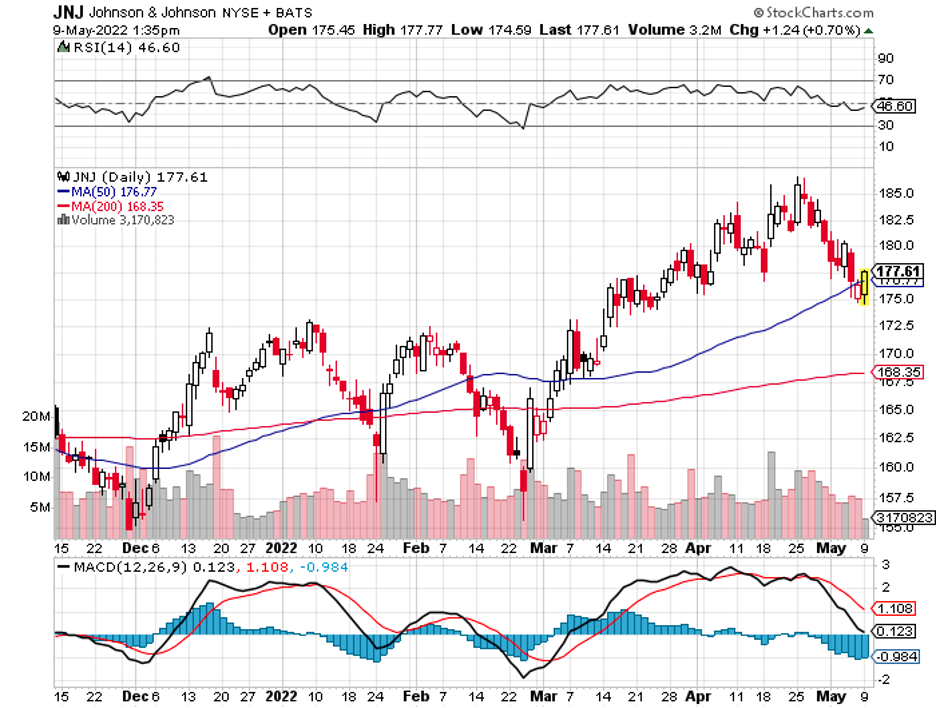
Mad Hedge Biotech and Healthcare Letter
April 14, 2022
Fiat Lux
Featured Trade:
(A BIOPHARMA STOCK BENT ON REDEMPTION)
(MRK), (BMY), (ABBV), (ORGN), (PFE), (VTRS), (MRNA), (BNTX), (CRSP), (VRTX), (BLUE), (BIIB)
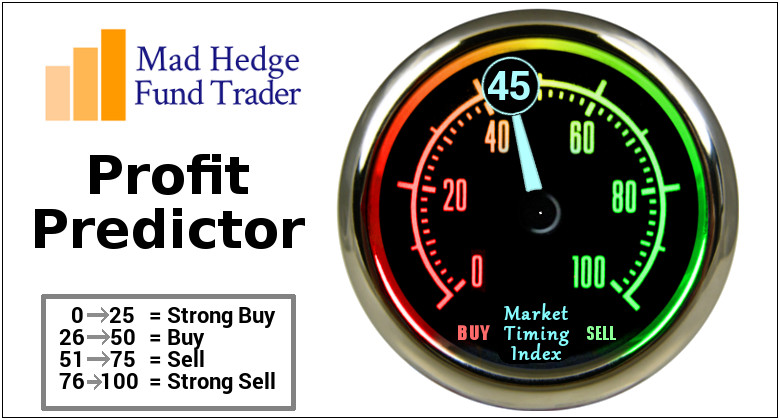
It looks like we’re about to bear witness to a redemption journey.
Once upon a time, Merck (MRK) was a major player in the cardiovascular sector. Over the years, it has gradually diminished to a minor league name.
However, Merck has plans to reverse this fortune and reclaim its dominance in the cardio market. To date, it has eight new drug approvals and a slew of expanded labels queued in the next couple of years.
This decision is evident in Merck’s move to outbid Bristol Myers Squibb (BMY) in the auction for Acceleron Pharma, shelling out a whopping $11.5 billion to boost its cardio pipeline considerably.
While the deal may seem like a massive risk, Merck is confident that this deal holds the potential to open up the path to single-product peak sales reaching $10 billion by the mid-2030s.
In fact, there’s no need to wait for long to see some solid proof of Merck’s multibillion-dollar bet, as Acceleron already has a candidate set to be put on display by the end of 2022 or early 2023.
This Acceleron acquisition forms part of the “New Merck” touted when the company welcomed a new CEO and came on the heels of the success of the leadership that brought the mega-blockbuster cancer drug Keytruda.
It also signifies Merck’s conscious efforts to ease their heavily criticized over-dependence on Keytruda.
While the drug will lose patent protection after 2028, Keytruda still holds a significant portion of Merck’s sales. The treatment accounted for roughly 35% of the company’s total revenues last year.
The patent loss of a significant moneymaker is a typical problem for virtually every Big Pharma company, with AbbVie (ABBV) and Bristol Myers Squibb coming to mind as the most recent examples.
The go-to solution to this is pursuing mega-money mergers: AbbVie acquired Allergan for $63 billion while Bristol splurged on Celgene at $74 billion.
This quickly bolsters the existing pipelines and portfolios of the companies and assuages the fear of investors over impending revenue losses.
Instead of following this pattern, Merck did the opposite in 2021.
The company decided to downsize and established a spinoff segment: Organon (ORGN). The idea is to offload its biosimilars and other legacy products to focus on its core strengths.
This is reminiscent of Pfizer’s (PFE) move to spin out its Upjohn unit and merge it with Mylan to form Viatris (VTRS).
This move looks to have worked well for Merck and Organon as it allowed the parent company to focus on its blockbuster brands.
For instance, Bridion recorded a 28% year-over-year rise in 2021 to reach $1.53 billion in sales, while ProQuad reported a 14% increase to hit $2.14 billion.
Meanwhile, Gardasil rose to an impressive 44% to contribute $5.7 billion.
Even Merck’s Animal Health sector grew by 18% to record $5.6 billion.
There’s also Keytruda, which is projected to become the highest-selling drug at $24.3 billion by 2026.
These are only some of the blockbuster products in Merck’s portfolio expected to continue increasing revenues this 2022.
In addition, the company expects at least $5 billion from its COVID-19 antiviral drug Molnupiravir.
Looking at the trajectory and growth of the pipeline and existing programs, Merck estimates an additional 17% increase in its year-on-year revenue in 2022 to reach $56.1 billion to $57.6 billion.
Despite the move to establish a spinoff unit, the Acceleron deal hints at the possibility that Merck might be shifting to an open checkbook strategy.
Considering how relentlessly it pursued the deal, there’s a chance that the company would be at the bargaining table for a while in search of ways to protect itself against the pending Keytruda patent loss.
Some contenders for a potentially splashy offer from Merck are Moderna (MRNA) and BioNTech (BNTX), which could bolster the bigger company’s mRNA pipeline.
It can also splurge on gene therapy experts by targeting CRISPR Therapeutics (CRSP) and even Vertex (VRTX).
However, given bluebird bio’s (BLUE) flailing performance as of late, this small biotech could very well be a contender for a bargain deal.
Speaking of discounted stocks, Biogen (BIIB) is also reportedly under consideration simply because of its deeply discounted price following its disastrous Alzheimer’s disease program.
Whatever move it makes, one thing is sure: Merck, with its $208 billion market capitalization, is in a healthy and stable place financially.
More importantly, it has an excellent product portfolio and an exciting pipeline.
It has shown remarkable growth in the past years and impressive efforts to secure a great future, making it a solid stock to buy and hold for a long time.
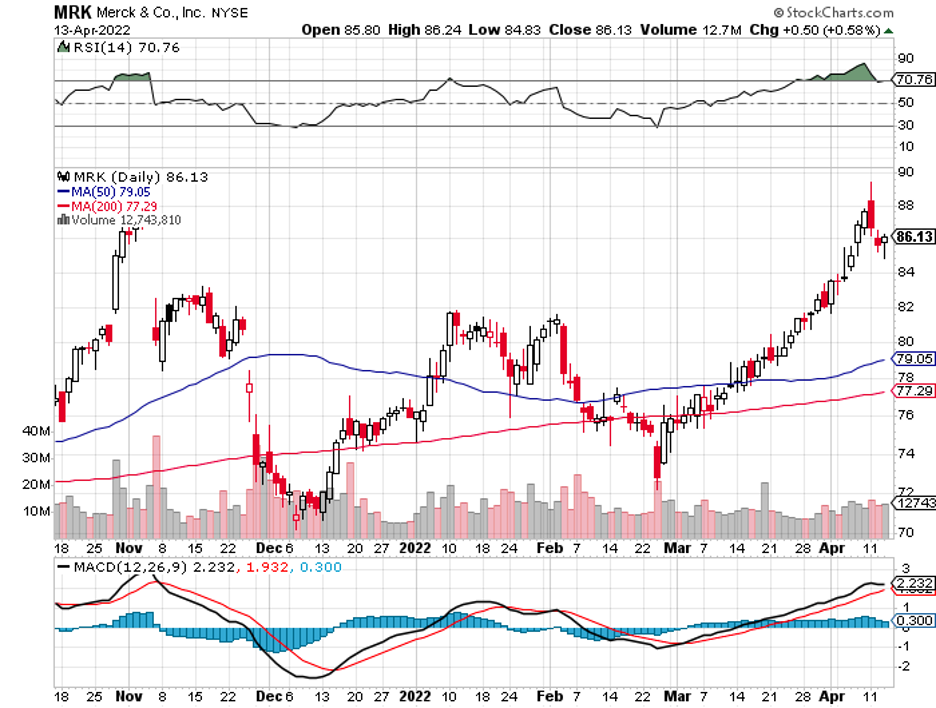
In an economy continuously plagued with a rising interest rate, it’s not unheard of for risk-averse investors to steer clear of businesses with high debt loads.
After all, those kinds of companies could be the most affected as climbing interest rates inevitably lead to lower profits.
The silver lining is that there’s no need to sacrifice putting money in growth stocks altogether.
You can simply load up on ultra-conservative businesses to ensure that you don’t come off the losing end in the battle of an ever-increasing interest rate.
In the biotechnology and healthcare sector, there are a handful of promising fast-growing businesses that are not saddled with tons of debt. One of them is Vertex Pharmaceuticals (VRTX).
A continuously growing business, Vertex recorded $7.5 billion in sales in 2021, showing off a 22% increase from 2020.
Its cystic fibrosis (CF) program is a major player in its growth, particularly Trikafta/Kaftrio. On its own, this blockbuster treatment contributed $5.7 billion to Vertex’s top line in 2021.
As it expands and goes after more growth opportunities, Vertex consistently ensures that it is backed by a solid balance sheet. In total, its short- and long-term liabilities amount to roughly $3.3 billion.
With a cash balance of $6.8 billion, the company has more than enough to clear that off.
In the past 12 months, Vertex has generated roughly $2.6 billion in cash from its daily operating activities.
This biotechnology company has been in such excellent shape that it managed to buy back shares with $1.4 billion last year. That’s practically three times the $539 million it allocated to repurchasing efforts in 2020.
Meanwhile, investors who feel they missed the boat on Moderna (MRNA) now have a second shot at investing in another high-growth biotechnology company.
Plus, it still has a Moderna connection and already has a strong track record of dominating a lucrative market.
Vertex and Moderna, which saw their stock price catapult to a record-breaking 800% in the past two years, are working on an mRNA-based therapy for CF patients.
Now, you might be wondering why Vertex is pursuing this program, considering its dominance in the CF market.
In fact, the closest rival would be AbbVie (ABBV). However, Phase 2 trial results for this candidate are due in two to three years. That means Vertex will likely remain the top name in the CF space for a while. Nevertheless, Vertex appears determined to keep its lead.
So, why bother with a new program instead of bolstering the existing Trikafta pipeline?
Well, right now, Vertex has virtually covered 90% of the CF market—and this is where Moderna comes in.
What the two are trying to do is to completely cover the market and target the remaining 10% not qualified to take the existing Vertex CF treatment.
As of the last update, the remaining demographic is at 25,000 patients. This would translate to another $4 billion in commercial sales.
If they succeed, the two would have created the biggest competitor to Trikafta. That means Vertex’s most formidable rival would be Vertex as well.
Needless to say, Vertex’s continuous dominance in the CF space guarantees blockbuster levels of profits in the years to come.
Vertex has been busy expanding into additional therapeutics segments despite its resounding success in the CF space.
Another potential blockbuster is CTX001, a one-time gene-editing treatment targeting blood disorders beta-thalassemia and sickle disease, developed in collaboration with CRISPR Therapeutics (CRSP). This is by far the most exciting venture of the company, with the partners expected to file for regulatory approval by the end of 2022.
Aside from these, Vertex’s pipeline is filled with promising candidates. One is VX-147, which is a groundbreaking therapy for severe genetic kidney diseases. There’s also autoimmune treatment VX-880.
VX-548 is another exciting candidate. While this drug is aimed to be an acute pain treatment, a key characteristic is the absence of drug addictiveness.
This is a breakthrough effort because it might just be the answer to the ongoing opioid crisis.
Given the unique mechanism of VX-548, this alternative aims to deliver treatment with low addictive effects.
There are roughly 75,000 deaths reported annually caused by overdose on opioid drugs in the United States alone. This could translate to $4 billion in the addressable market.
Although these candidates are not as advanced as Vertex’s CF program, they demonstrate that the company can go beyond its well-established niche and bolsters investor confidence.
With the rising inflation and economic turbulence, it’s advisable to prioritize companies with steady cash flow and promising growth prospects
Despite the rough couple of years for the broader market, Vertex easily meets these expectations and appears to be one of the positive stories in the healthcare and biotechnology sector.

Mad Hedge Biotech and Healthcare Letter
March 31, 2022
Fiat Lux
Featured Trade:
(A SUPERCHARGED BUY-AND-HOLD GEM FIRING ON ALL CYLINDERS)
(ABT), (PFE), (VTRS), (MRK), (OGN), (ABBV)
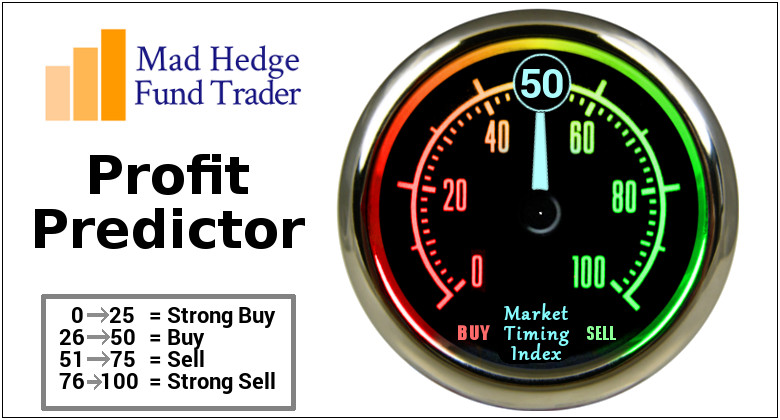
Sell-offs can be stomach-churning, but they also offer excellent opportunities to load up on shares of companies that are typically too expensive to purchase otherwise.
You can never go wrong when you opt for dividend stocks that are impressively stable and possess a solid track record that stood the test of time.
One name that fits this description in the biotechnology and healthcare sector is Abbott Laboratories (ABT).
Over the past years, Abbott has had its hand in diverse ventures ranging from BinaxNOW antigen tests and continuous glucose monitors to Pedialyte. That’s why it comes as no surprise that the company’s over $43.1 billion revenue in 2021 was generated from extensive sources.
While the rest of the world struggled financially during the pandemic, Abbott was able to leverage the strength of its business model.
Thanks to its diverse coverage of the healthcare market, Abbott was able to readily seize the high growth potential of diagnostic tests in the early stages of the COVID-19 pandemic.
This hold of the market expanded as more tests were needed due to the emergence of multiple variants. Since Abbott already had the technology at the ready, it was able to position itself as a first mover and leader in this segment.
In addition, its diverse portfolio and strategic partnerships translated to an increase in its quarterly revenue to more than 81% in the past five years. It has also boosted Abbott’s growth at twice the S&P 500’s pace and even flagship biotech and healthcare ETFs in the past five years.
Moreover, Abbott’s dividend has consecutively increased in the past 50 years, giving the company the title “Dividend King.”
Abbott’s dividend has increased by an impressive 77% in the last five years thanks to its significant participation in the COVID-19 testing kit market.
More importantly, a market sell-off won’t necessarily affect Abbott’s business. Given its track record, it’s safe to say that its dividend will keep rising in the years to come, thereby rewarding patient long-term investors.
Among the diverse divisions within Abbott, the most exciting is its Medical Devices segment. For years, the company’s innovations in this sector have gained praise from healthcare providers for their ability to combine technology and health under one umbrella.
This segment has greatly benefited from key acquisitions, with the $5.8 billion acquisition of Alere boosting its care diagnostics sector and $25 billion merger with St. Jude’s Medical dramatically expanding its medical device department.
So far, the company has created products for stroke prevention, electrophysiology, and cardiac monitoring—all of which have targeted high-growth segments.
In this particular area, Abbott’s key growth driver is a product called Libre Freestyle. This is an integrated continuous glucose monitoring device.
Basically, it is an implanted device that helps patients with diabetes to monitor their glucose levels. It communicates with an app and, depending on the patient’s condition, is connected to an automated insulin pump.
This effectively eliminates the need for the painful finger-sticking method or self-injecting insulin.
Abbott only has two serious competitors in this breakthrough diabetes-centered technology: Medtronic (MDT) and Dexcom (DXCM).
Despite their presence, Abbott holds the lead due to its more affordable price point, with Freestyle Libre sales increasing by $1 billion in 2021 to record a total of $3.7 billion.
Another interesting department for Abbott is its Established Pharmaceuticals sector. This segment covers established drugs like cystic fibrosis drug Creon, IBS treatment Duspatal, and influenza vaccine Influvac.
While this isn’t a fast growth segment, it has become an essential contributor to the company, with most of its sales coming from wholesale agreements overseas.
Suppose the movement from other Big Pharma companies is any indication. In that case, this segment may very well be on its way to becoming another spinoff organization like Pfizer’s (PFE) move to create Viatris (VTRS) and Merck’s (MRK) decision to develop Organon (OGN).
As a biotechnology and healthcare company, Abbott does not offer the typical buzz-worthy updates that investors in this space are on the lookout for.
Instead, the company has been actively developing products for diagnostics, medical nutrition, medical devices, and surgical tools. Moreover, it focuses on harnessing solid relationships with medical professionals and health insurers.
Unlike its spinoff company AbbVie (ABBV), Abbott is regarded as a financially traditionalistic business. It is a conservative Dividend King that’s steadily growing in its established business sectors, making it a buy-and-hold gem for patient long-term investors.
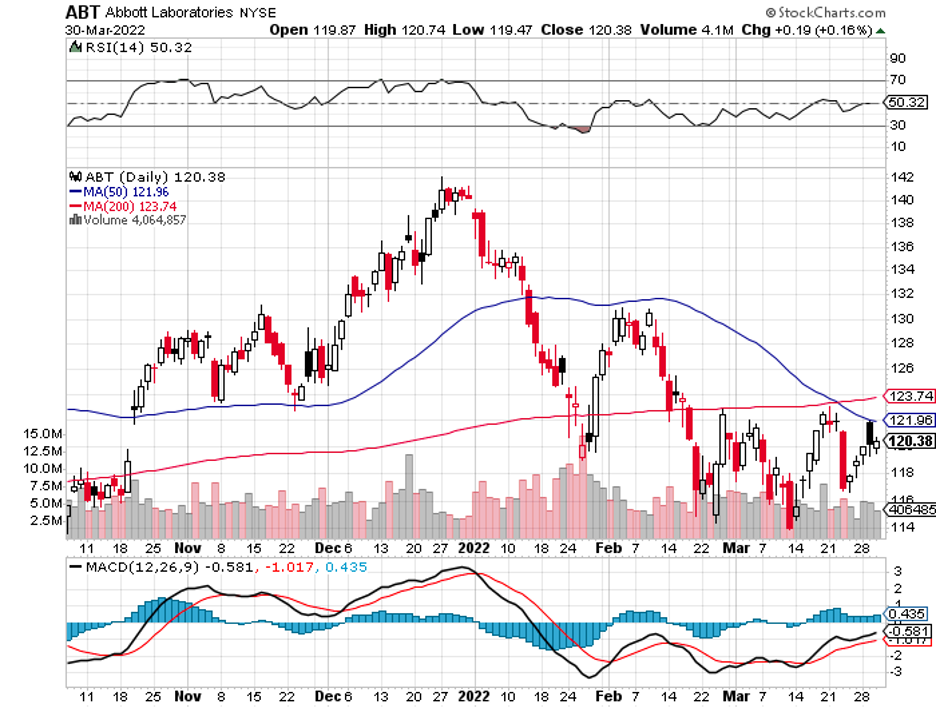
Mad Hedge Bitcoin Letter
October 12, 2021
Fiat Lux
Featured Trade:
(AN ANTI-BUBBLE HEALTHCARE STOCK TO KEEP YOU SAFE)
(VTRS), (PFE), (SNY), (RHHBY), (REGN)
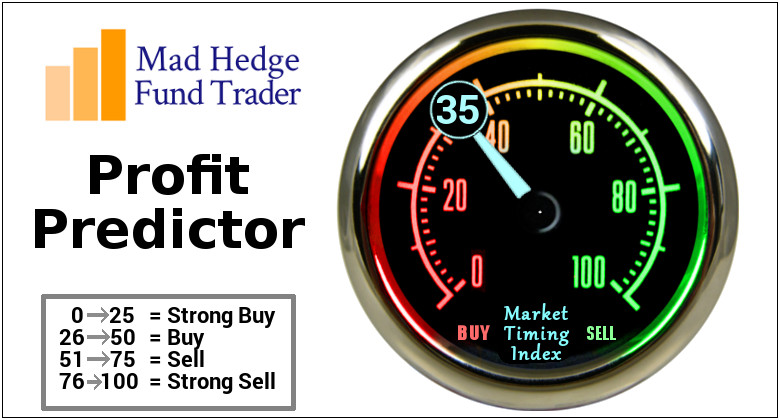
Some stocks bring red-hot gains. These companies are thrilling. Most investors flock to these businesses like bees to honey. Then, there are stocks such as Viatris (VTRS).
You won’t hear much buzz about Viatris.
After all, this company develops generic drugs—a fairly boring business. At times, it feels like nobody even talks about this stock at all.
However, Wall Street claims that several stocks have more room to expand soon. Interestingly, the names aren’t your usual list of growth stocks that most investors expect to ascend. The largest expected gainers are boring stocks.
This is where Viatris becomes interesting.
One of the possible reasons that Viatris isn’t generating as much buzz is that it was only established in 2020. The company is the product of a spinoff between Pfizer’s (PFE) Upjohn unit and generic drugmaker Mylan.
The spinoff allowed Pfizer to concentrate more on developing its pipeline candidates, while Viatris focused on off-patent and generic drugs.
However, Viatris has been off to a slow start, with the stock down by over 28% this year. In fact, the company has reported net losses for three quarters in a row.
Needless to say, both resulted in having the stock deeply discounted.
While these can cause other investors to shy away from the stock, I look at it as part of the company’s growing pains.
And it looks like things are about to turn around soon.
By the end of this year, Viatris expects to reach cost synergies of roughly $500 million. Through major restructuring, the company anticipates doubling this to more than $1 billion by 2023.
As an early-stage business, Viatris offers a stable long-term investment.
While it recorded a somewhat flat performance at $4.6 billion in sales in June, the company’s lineup of new products signals growth ahead.
For example, Viatris estimates to generate roughly $690 million in revenue for its new products—a highly achievable projection for the company.
Just last July, Viatris scored approval for a biosimilar product called Semglee. This is an insulin biosimilar to the high-selling Lantus of Sanofi (SNY), which peaked at $6.4 billion in sales in 2015 and lost patent exclusivity in 2014.
Semglee is reported to be fully interchangeable with the reference drug, which means that Viatris’ biosimilar is the exact equal of Sanofi’s previous blockbuster.
Moreover, Semglee is priced at about $148 for five pre-filled insulin pens, offering a whopping 65% reduction from Lantus’ cost.
The significant price difference is clearly difficult to ignore, especially at a time when politics has joined the fray in drug pricing.
The ability of Viatris to undercut the prices offered by Big Pharma definitely signals long-term benefits in terms of the company’s bottom line.
Aside from Semglee, Viatris has seven more approved biosimilars on the market.
The list includes Roche’s (RHHBY) breast cancer treatment Herceptin, which peaked at $6 billion in sales, and Regeneron’s (REGN) AMD drug Eylea, which generates an average of $8 billion annually.
It even has AbbVie’s (ABBV) megablockbuster immunology therapy Humira, which averages $20 billion in sales annually.
While Viatris won’t be the only company marketing a biosimilar for Humira, the company has the advantage since its candidate, Hulio, already gained approval in Canada, Europe, and even Japan.
Meanwhile, Viatris’ near-term pipeline candidates hold the potential to generate $57 billion in sales. Adding the rest of its 31 biosimilar candidates could push the figure to $224 billion.
The expansion of the biologics market is anticipated to outpace traditional pharma in the future. From $300 billion in 2020, the biologics segment is projected to reach $690 billion by 2027.
Aside from its biosimilar programs, Viatris has also been working on its internal development plans.
This would mean developing new high-margin brand names as well as diversifying its portfolio to include novel therapies.
Viatris is projected to reach at least $35 per share in the coming months, showing off a promising 155% jump from its current price.
On top of that, investors have been enjoying a juicy payout of 3.2%—higher than the average 1.3% of the S&P 500.
Considering the risks brought by market correction, Viatris emerges as a prime candidate for a safe haven among investors.
That is, they can easily lock in on this relatively anti-bubble business that’s available at practically a bargain bin price.
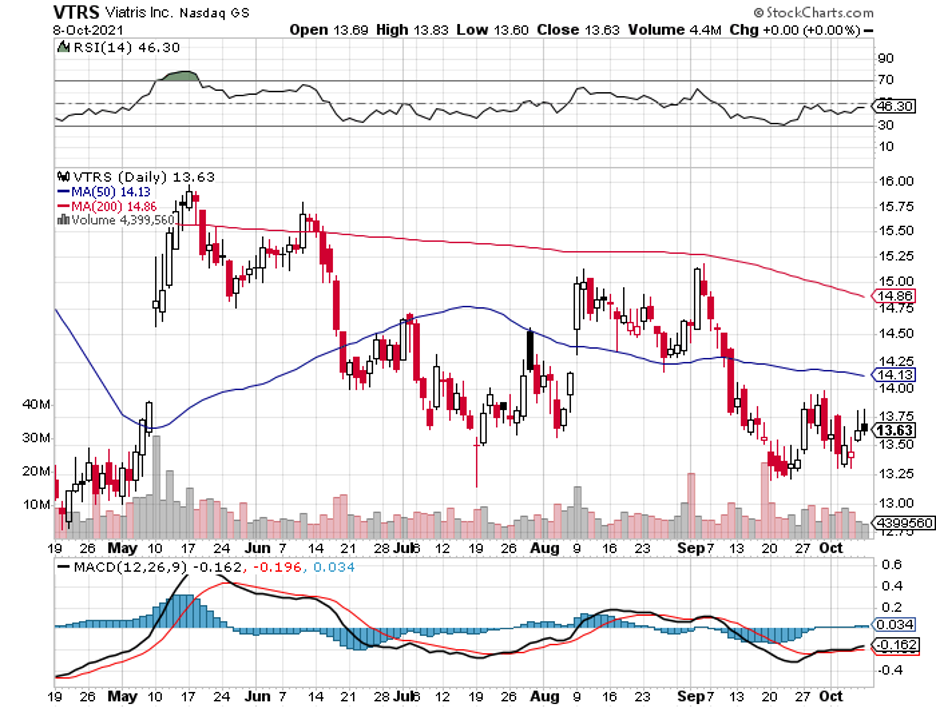
Mad Hedge Biotech & Healthcare Letter
August 26, 2021
Fiat Lux
FEATURED TRADE:
(ANOTHER FORETOLD ACQUISITION)
(PFE), (TRIL), (BNTX), (VTRS), (ALXO)
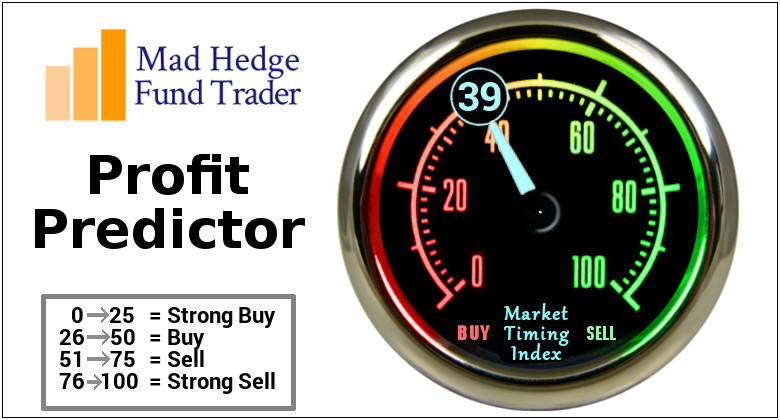
Legal Disclaimer
There is a very high degree of risk involved in trading. Past results are not indicative of future returns. MadHedgeFundTrader.com and all individuals affiliated with this site assume no responsibilities for your trading and investment results. The indicators, strategies, columns, articles and all other features are for educational purposes only and should not be construed as investment advice. Information for futures trading observations are obtained from sources believed to be reliable, but we do not warrant its completeness or accuracy, or warrant any results from the use of the information. Your use of the trading observations is entirely at your own risk and it is your sole responsibility to evaluate the accuracy, completeness and usefulness of the information. You must assess the risk of any trade with your broker and make your own independent decisions regarding any securities mentioned herein. Affiliates of MadHedgeFundTrader.com may have a position or effect transactions in the securities described herein (or options thereon) and/or otherwise employ trading strategies that may be consistent or inconsistent with the provided strategies.
This site uses cookies. By continuing to browse the site, you are agreeing to our use of cookies.
OKLearn moreWe may request cookies to be set on your device. We use cookies to let us know when you visit our websites, how you interact with us, to enrich your user experience, and to customize your relationship with our website.
Click on the different category headings to find out more. You can also change some of your preferences. Note that blocking some types of cookies may impact your experience on our websites and the services we are able to offer.
These cookies are strictly necessary to provide you with services available through our website and to use some of its features.
Because these cookies are strictly necessary to deliver the website, refuseing them will have impact how our site functions. You always can block or delete cookies by changing your browser settings and force blocking all cookies on this website. But this will always prompt you to accept/refuse cookies when revisiting our site.
We fully respect if you want to refuse cookies but to avoid asking you again and again kindly allow us to store a cookie for that. You are free to opt out any time or opt in for other cookies to get a better experience. If you refuse cookies we will remove all set cookies in our domain.
We provide you with a list of stored cookies on your computer in our domain so you can check what we stored. Due to security reasons we are not able to show or modify cookies from other domains. You can check these in your browser security settings.
These cookies collect information that is used either in aggregate form to help us understand how our website is being used or how effective our marketing campaigns are, or to help us customize our website and application for you in order to enhance your experience.
If you do not want that we track your visist to our site you can disable tracking in your browser here:
We also use different external services like Google Webfonts, Google Maps, and external Video providers. Since these providers may collect personal data like your IP address we allow you to block them here. Please be aware that this might heavily reduce the functionality and appearance of our site. Changes will take effect once you reload the page.
Google Webfont Settings:
Google Map Settings:
Vimeo and Youtube video embeds:
